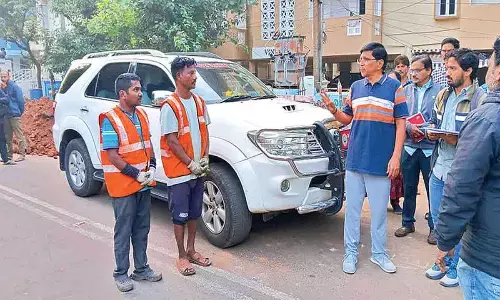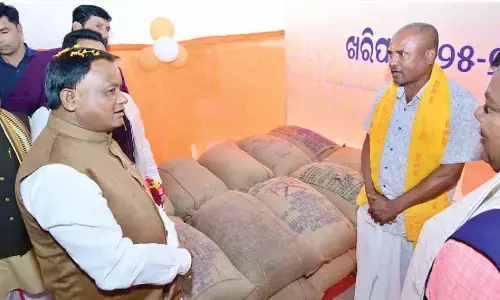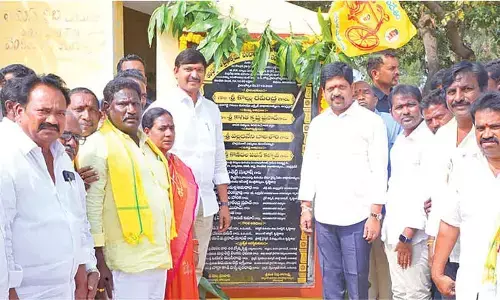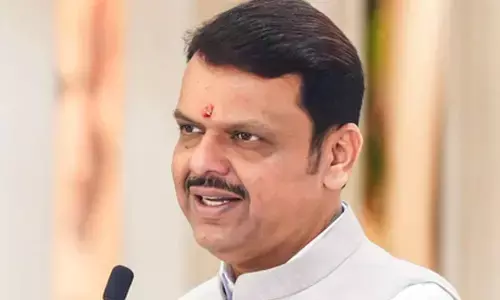Drones safe for pesticide spraying?

Drones safe for pesticide spraying?
More detailed studies are required to assess the damage from pesticides drift (the movement of pesticide droplets to an unintended area) and thereby the damage increased pesticides sprays will cause to human health, environment and the ecosystems. It is quite intriguing to read a comment by an Ernest & Young executive saying this technological intervention would raise the GDP by 1.5 per cent. A report in Washington Post (Feb 8, 2011) had said that the aerial sprays resulted in more than 550 deaths and serious health problems, including crippling disability, to over 6,000 people
A day after the Finance Minister Nirmala Sitharaman, in her Budget 2022 address, announced the launch of 'Kisan Drones,' it was quite intriguing to read a comment by an Ernest &Young executive saying this technological intervention would raise the GDP by 1.5 per cent. It took me sometime to realise that in a consumption-driven economy, the expected hike in GDP calculation was essentially based on the number of drones that the industry was hoping to sell.
No wonder, the Drone Federation of India had even worked out that the use of drones will help facilitate the vision of 'one-village-one-drone' in the next three years.
Anyway, a few months after the Budget speech, first the Central Insecticides Board and Registration Committee granted an interim approval for spraying 477 registered chemical pesticides, including pesticides, fungicides and also plant growth regulators with drones for a period of two years. Later, the Agriculture Minister, Narendra Singh Tomar, announced that a subsidy of 75 per cent will be provided to Farmer Producer Organisations (FPOs) for purchase of a drone and its demonstration to farmers. For farmers, a financial assistance of 40 per cent to a maximum of Rs 4-lakh is being provided.
In the month of July, media reports said the pesticides major Syngenta India received permission to spray a fungicide on paddy. Reports also say that in addition, Big Agrichemical companies like Bayer, BASF, Dhanuka Agritech, UPL and Insecticides India Ltd were planning to use drones over 30,000 acres on a pilot basis during the kharif season that just ended. It is believed that such measures will surely enable companies to monitor the spray results, and fine tune the technological innovations, like the spray nozzle size, chemical composition to reduce drift etc, and thereby understand various aspects of the drone technology when it comes to practical application in field operations. So far, what the pilot studies conclude is not known, but it will surely be interesting to evaluate the results and the methodology used.
While I can understand the excitement over introducing new technological tools like drones, which for the drone manufacturers and pesticide companies is a huge business opportunity, more detailed studies are surely required to assess the damage from pesticides drift (the movement of pesticide droplets to an unintended area) and thereby the damage increased pesticides sprays will cause to human health, environment and the ecosystems. Although the drone manufacturers will deny it, and so will the pesticides industry, but the fact remains that even for a popular herbicide – glyphosate, assumed at one stage to be not spreading with air, subsequent studies have shown that the herbicide residues have been detected at all locations where it was possible to measure the toxicity limits.
Already, studies of 'long-range pesticides transport' have shown that pesticides travel from a few hundred metres to more than 1,000 kilometres. To illustrate, remember the peoples' resistance to continued aerial spraying of Persistent Organic Pollutant, Endosulfan, on cashew plantations in Kasaragod district of Kerala that resulted in an alarming damage to human health, soil and water. A report in Washington Post (Feb 8, 2011) had said that the aerial sprays resulted in more than 550 deaths and serious health problems, including crippling disability, to over 6,000 people.
The villagers eventually forced the Kerala government to impose a ban on aerial spraying in 2004. As if this is not enough, the Environment Science & Technology journal had way back in 2008 published research findings that showed presence of the pesticide DDT in Antarctic Penguins. "DDT, along with a lot of other organic pollutants, actually travels through the atmosphere ... towards the polar regions by a process of evaporation, and then condensation in cooler climates," the researchers had concluded. This study conclusively established not only the possibility but the reality of long-distance travel of pesticide aerosols, even able to cross the mighty Indian and Antarctic Oceans.
In America, a 2021 study found more than one million acres under soybean to be affected with dicamba herbicide from nearby fields.
Considering that occupational poisoning globally has risen over the years, from about 25 million in 1990 to 385 million now, I thought the effort in India would have been to reduce the application of pesticides. Whether by drones or by manual spraying, better approach would be that farmers should be provided with safer biological alternatives and doing away with consumption of pesticides
Now let us revert back to the regulations that have been put in place for the use of drones. According to the Hyderabad-based researcher and activist, Narasimha Reddy Donthi, a conflict of interest was clearly visible in the way the Standard Operating Procedure (SOP) for drone applications were prepared by the Ministry of Agriculture & Farmers Welfare. The committee that worked on it was loaded with experts from the drone manufacturing industry and from the pesticides companies. In his communication to the Ministry, he has brought attention to numerous visible gaps in formulating what could have been still tighter SOP measures.
One of the standards that have been suggested pertains to informing the Gram Panchayat and Panchayat Samiti at least 24 hours in advance by the drone operator before a drone spray is to be conducted.
The Samiti is then expected to inform neighbouring farmers to take adequate precautions when the spraying is being done. In other words, this essentially means that the possibility of pesticides drift to the neighbouring crop fields is already acknowledged.
Knowing that 97 per cent increase in quantity of pesticides used has happened in Asia, of which 40 per cent is in India, I suggest first setting up a facility for air monitoring of pesticides, which only Sweden has put in place. Secondly, even though the priority should be to phase out the application of chemical pesticides, till the time this is done it will make absolute economic and environmental sense in educating farmers to keep the pesticide at the source of irrigation water in the crop field. Although this was the usual practice with farmers some 50 years back but with the advent of new pesticides equipment – knapsack sprayers and different nozzles – it was gradually discarded.
A study in mid-1980s by International Rice Research Institute (IRRI) in the Philippines had shown that keeping pesticide at the source of flowing water channel into the crop field is as effective as using different nozzle sprays. It is time to dig out that study.



















